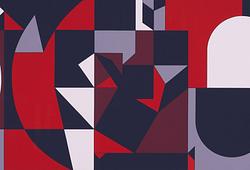Gustaf Fjaestad
Traces in the snow
Signed G. Fjaestad. Panel 90 x 106 cm.
Provenance
Private Collection, Sweden.
More information
In the auctions painting, we see what Gustaf Fjaestad became most famous for, earning him the epithet "Master of Rimfrost," namely the Värmland winter landscape. In this painting, we can see traces in the deep snow leading the viewer's gaze into the dark forest. One of Fjaestad's biographers, Agneta Fjaestad Nordmark, speaks of "an intimacy," "as if this place were one's 'own' private spot." It's easy to agree with the statement when looking at the painting. Somewhere at the intersection of nature lyricism and symbolism, the Värmland forest motifs are depicted with artistic clarity and richness of detail.
Gustaf Fjaestad, in many ways, nurtured the artistic progress of his contemporaries. Bruno Liljefors, who was a prominent contemporary, became Fjaestad's foremost mentor in the 1890s. They met one day in Uppsala and became close friends. In 1893, Liljefors hired him as an assistant in the creation of the landscape panorama at the Biologiska Museet in Stockholm. Three years later, another prominent contemporary, Carl Larsson, sought his assistance for the mural work in the Nationalmuseum's stairwell. Thus, Fjaestad was involved in two of the biggest art projects of the 1890s.
Artist
Gustav Fjaestad was a pupil of Bruno Liljefors and Carl Larsson. He became renound for his depictions of Swedish winter landscapes, often with glistening icecrystals and bubbling water by ice's edge, sometimes lit up by the setting sun, sometimes in scales of grey, white and purple. He also designed templates for woven wallpapers, furniture, and wrought iron. He is represented in major Swedish museums as well as in Vienna and Chicago.
Read more












































